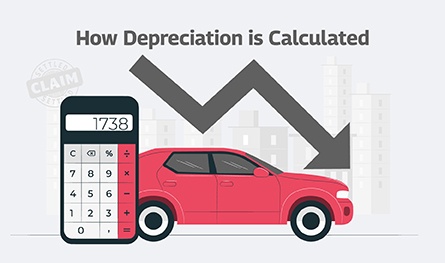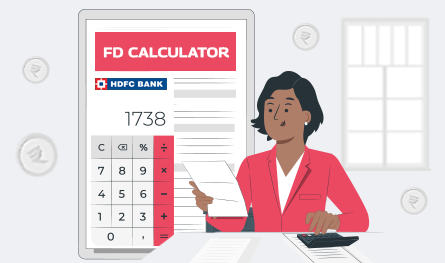Related Articles
 Jan 08, 2025
Jan 08, 2025
Is Varicose Vein surgery covered under the health insurance policy in India
 Health Insurance
Health Insurance

Good health is never guaranteed. An unprecedented accident can jeopardise the situation in a matter of seconds. The effects can be long-lasting, sometimes lifelong, both in respect of finances and physical changes.
Considering the steep medical inflation and the rise of ailments, having comprehensive health coverage has become almost mandatory. It acts as a financial safeguard to protect you against unforeseen medical emergencies.

In case you have any hereditary record of critical or chronic ailment, you must consider opting for a critical illness health plan.
In the case of severe critical health issues like coma, cancer, cardiac arrest, etc., the treatment costs tend to be very expensive and often long-term. Considering such tough circumstances, insurers have crafted special critical illness plans.
A critical illness plan offers financial coverage for specifically listed critical ailments. It involves various charges like special consultation charges, specialised treatment costs, etc. Most of these expenses are not covered under a standard health cover. Therefore, a critical illness insurance plan comes in handy under such circumstances.
To ensure optimum protection, it is best to maintain both standard health coverage and critical illness insurance.
Critical illness cover can also be added as a rider to your existing health cover. However, the coverage extent of a separate critical illness plan is comparatively much greater.
Unlike any standard health insurance, a critical illness plan never warrants any hospitalisation for the insured person to avail of the plan benefits. Usually a standalone critical illness plan is a fixed benefit health insurance plan with lumpsum payout on diagnosis of any of the listed critical ailments.
Here, once you get diagnosed with any of the listed critical ailments, the insurer will offer a lump sum payout based on the sum insured of the plan, irrespective of the treatment costs. However, based on the policy terms, you need to outlive the survival period, i.e., survive for a specific predetermined period after the detection of the ailment, to avail of the benefits.
Some of the common critical ailments include paralysis, cancer, coma, heart issues, kidney issues, etc., as the specific list of the plan mentions.
While choosing the most suitable critical illness insurance, you need to consider certain specific and crucial factors to ensure the best coverage protection:
The coverage extent is regarded as the most crucial aspect of any insurance, and critical illness policy is also no exception. Not all insurance plans allow coverage for all sorts of critical ailments. You have to ensure what are the types of ailments covered under your chosen plan.
Ideally, a CI plan also covers multiple medical care costs, surgery costs, and other expenses. So, one of the principal advantages of having CI insurance is that it allows coverage for various uncertain and unforeseen health situations.
However, you must note that the claim settlements are always based on the terms and conditions of the chosen policy.
Usually, all CI plans to observe a survival period clause. This is a unique feature of this sort of plan, which refers to the specific time the concerned insured individual needs to live after the diagnosis of the critical ailment.
This span usually ranges between 14 days and 30 days, depending on the terms of the chosen plan. Once this time limit is over, the insurer will pay a lump sum as a policy benefit.
Once the payout is over, the critical illness insurance automatically ceases to exist.
A critical illness plan with extensive coverage is always the most desirable condition. It ensures sufficient coverage despite challenging and demanding circumstances. This is decided by the sum insured amount you have chosen.
The higher the coverage and the sum insured, the higher the premium. The ideal purpose of any health plan is to reduce your financial burden, especially during emergencies. So, the premium payment is never desired to be a burden, compromising on your current standard of living and lifestyle. Ensure to be critical and wise in making your choice to maintain a healthy financial portfolio.
No health plan offers 100% coverage. The policy fine print mentions all the inclusions and exclusions in detail, along with all the terms and conditions, based on which you need to ensure your claim settlement when needed. You must clarify all the doubts and ambiguities beforehand to avoid any last-minute unpleasant surprises.
To ensure your affordability, you have to clarify the premium payable amount based on your circumstances and requirements. The premium rates tend to increase with the amount of sum insured, the additional riders chosen (if applicable), the tenure, the coverage extent, etc.
The premium payable amount must not prove to be a financial burden. You must be able to continue the plan comfortably without compromising on your current living standards and expenses. You can easily utilise the premium calculator to make an informed decision.


Paybima Team
Paybima is an Indian insurance aggregator on a mission to make insurance simple for people. Paybima is the Digital arm of the already established and trusted Mahindra Insurance Brokers Ltd., a reputed name in the insurance broking industry with 17 years of experience. Paybima promises you the easy-to-access online platform to buy insurance policies, and also extend their unrelented assistance with all your policy related queries and services.
So, you’ve crossed the fabulous 60 mark. Retirement may be on the cards, your kids might be off doing their own thing, and suddenly your knees are making more noise than your WhatsApp notifications. Welcome to the senior citizen club.
Now let’s talk about something most of us tend to postpone until a doctor gives us a reality check: health insurance. If you are wondering whether buying health insurance after 60 makes sense, the answer is a loud and clear yes. This article will cover everything you need to know about it, how it makes sense, how it differs from health insurance for young adults, and what you need to look out for when checking for medical insurance above the age of 60.

.png)
April 2 is observed as World Autism Awareness Day and there is no better way to observe the day than to raise awareness of this condition and to promote kindness towards autistic people. Read on to know more.


Car depreciation implies the difference between the cost of a car at the time of buying the car and when you sell it. A car insurance claim amount is determined by the car depreciation rate. The car depreciation rate is the reduction in the value of your car over its lifespan caused by wear and tear.


Fixed Deposits (FDs) are one of the safest ways to grow your savings. HDFC Bank offers attractive FD interest rates, allowing you to earn guaranteed returns on your investment. But before you invest, it's important to know how much interest you will earn and what your final maturity amount will be.


If you think of life insurance, chances are you are picturing something people buy in their 30s or 40s. But what if you are 65 or older and just getting started? The good news is that you are never too late. Whether you are thinking of easing the financial burden on your family, covering final expenses, or simply leaving behind a legacy, there are life insurance options tailored just for you.
This article will be a guide to life insurance for senior citizens above 65 years, explaining why it is important, the type of insurance options, and how to get the right policy for you.
